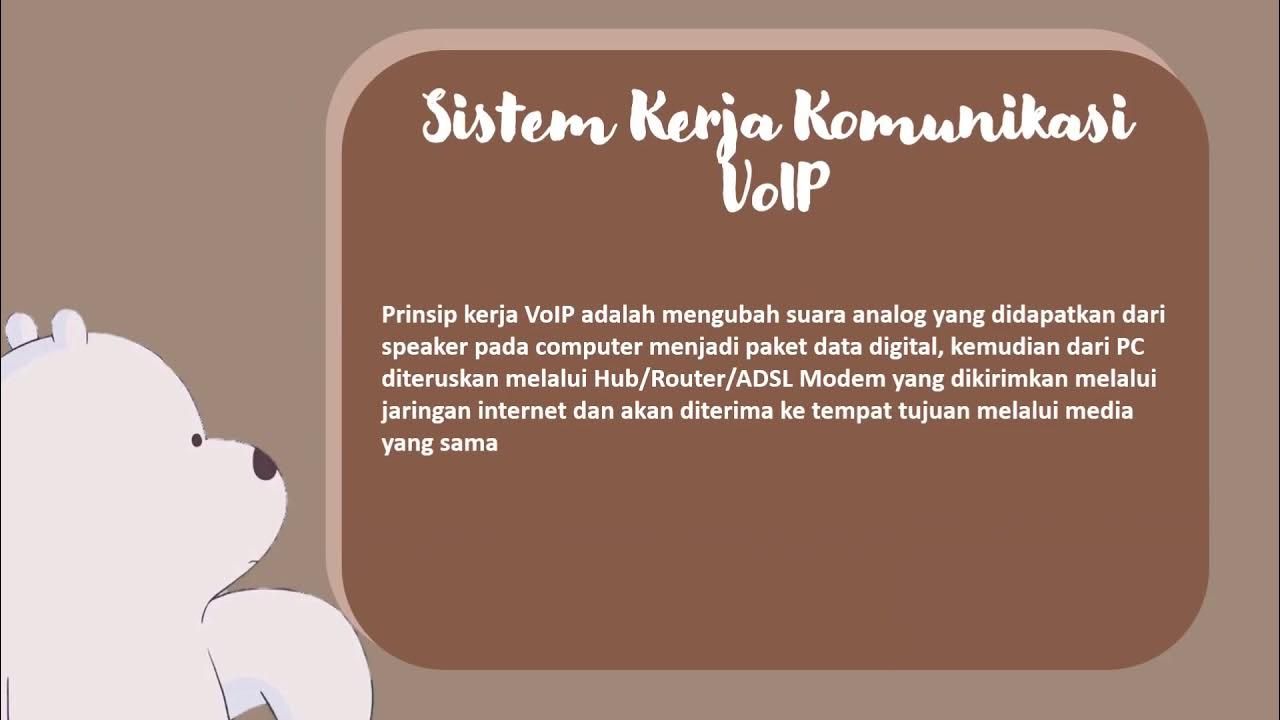Introduction to Voice over IP (Part 1)
Summary
TLDRThis video provides a foundational understanding of voice networking, tracing the evolution from traditional switchboards and PBXs to modern VoIP systems. It explores how voice and data networks have converged, enabling features like call forwarding and voicemail through IP-enabled PBXs. The video explains key components such as SIP trunks, codecs, and the roles of DHCP in configuring devices. It highlights the advantages of integrating voice communication into data networks, culminating in a comprehensive overview of modern telecommunication systems. Viewers can anticipate further insights into advanced network components in the upcoming videos.
Takeaways
- 😀 Voice networking has evolved from manual switchboards to automated systems, providing a foundation for modern telephony.
- 📞 Private Branch Exchanges (PBXs) allow businesses to manage internal and external calls efficiently without needing separate phone lines for each desk.
- 🔗 The Public Switched Telephone Network (PSTN) utilizes copper lines for call routing, connecting various exchanges and businesses.
- 💻 Digital links like ISDN started integrating phone calls and data, allowing for more efficient use of resources.
- 🌐 Unified communications combine voice and data onto a single network, paving the way for Voice over IP (VoIP) systems.
- 💡 IP PBXs maintain the traditional call routing functionality but operate over IP networks, integrating features like voicemail and call forwarding.
- 🔌 Power over Ethernet (PoE) enables desk phones to receive power and data over a single cable, simplifying network setups.
- 📈 SIP trunks have replaced ISDN for external calls, utilizing regular data links and IP-based protocols to connect with voice providers.
- 🔊 Codecs are crucial for converting analog voice into digital format, with various options prioritizing either audio quality or bandwidth efficiency.
- 🔍 The registration process of phones with the PBX involves DHCP and TFTP for configuration, ensuring they are properly integrated into the network.
Q & A
What is the primary focus of the video?
-The video aims to build a basic understanding of voice networking and its evolution, starting from traditional phone systems to modern VoIP technology.
How did phone systems operate in the early days?
-Initially, phone calls went through a switchboard operated by an operator who manually connected calls, using a system called a telephone exchange.
What is a Private Branch Exchange (PBX)?
-A PBX is a private telephone network used within a company, allowing internal and external calls without needing a separate phone line for each desk.
What advancements led to the development of the Private Automatic Branch Exchange (PABX)?
-The PABX automated the call routing process, enabling more features like call forwarding and voicemail, which made phone systems more efficient.
What does PSTN stand for, and what is its role?
-PSTN stands for Public Switched Telephone Network, a network of copper phone lines connecting businesses and residences to telecom providers.
What is the significance of ISDN in voice networking?
-ISDN, or Integrated Services Digital Network, introduced digital links that could carry both voice and data, paving the way for more efficient communications.
How does VoIP differ from traditional phone systems?
-VoIP (Voice over IP) combines voice and data on a single network, using IP addresses to route calls instead of relying on traditional phone lines.
What are the advantages of having an IP PBX?
-An IP PBX can integrate with other applications, manage user directories, and support both hard and soft phones, enhancing communication flexibility.
What is the function of SIP trunks in modern voice systems?
-SIP trunks allow for voice traffic to be routed over the internet, replacing traditional ISDN connections, and enabling scalable and flexible call handling.
Why is codec compatibility important in VoIP communication?
-Codec compatibility is crucial because it ensures that both communicating devices can effectively encode and decode voice data, maintaining call quality.
Outlines

This section is available to paid users only. Please upgrade to access this part.
Upgrade NowMindmap

This section is available to paid users only. Please upgrade to access this part.
Upgrade NowKeywords

This section is available to paid users only. Please upgrade to access this part.
Upgrade NowHighlights

This section is available to paid users only. Please upgrade to access this part.
Upgrade NowTranscripts

This section is available to paid users only. Please upgrade to access this part.
Upgrade Now5.0 / 5 (0 votes)





